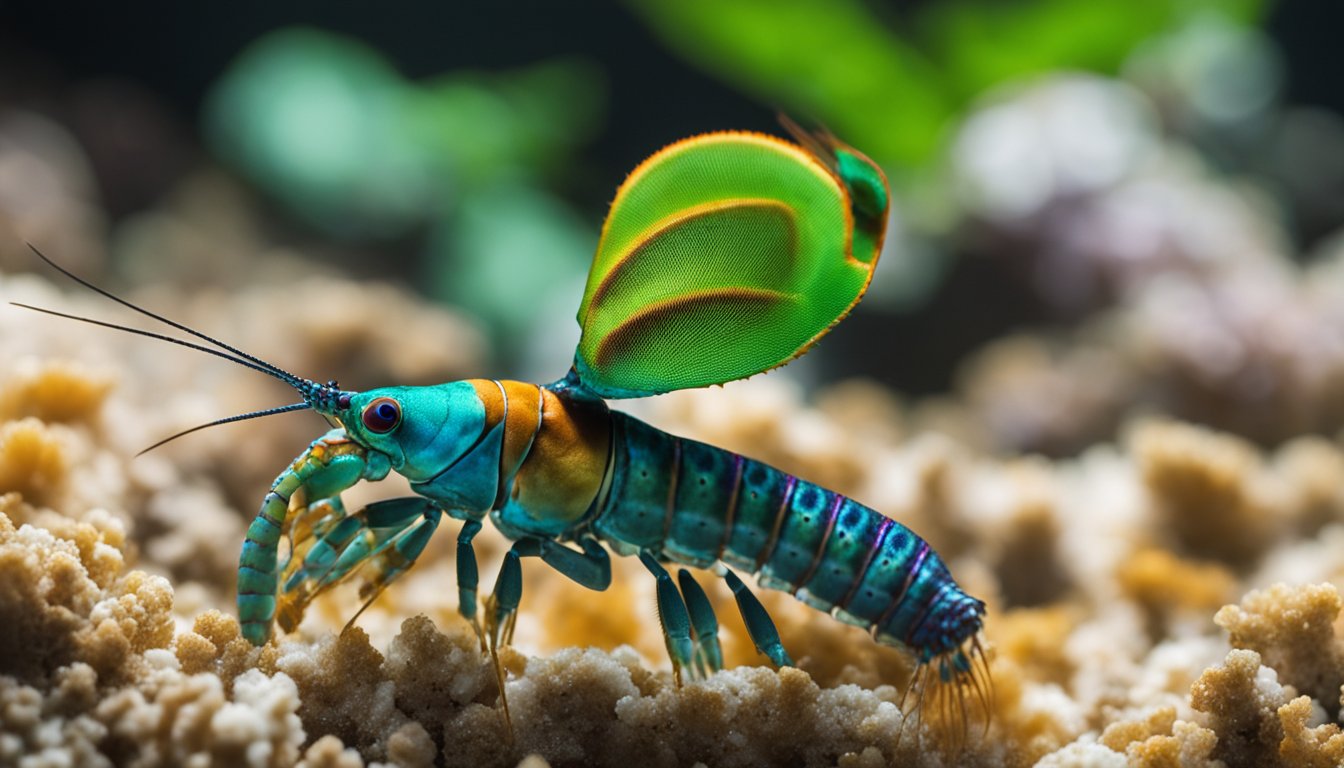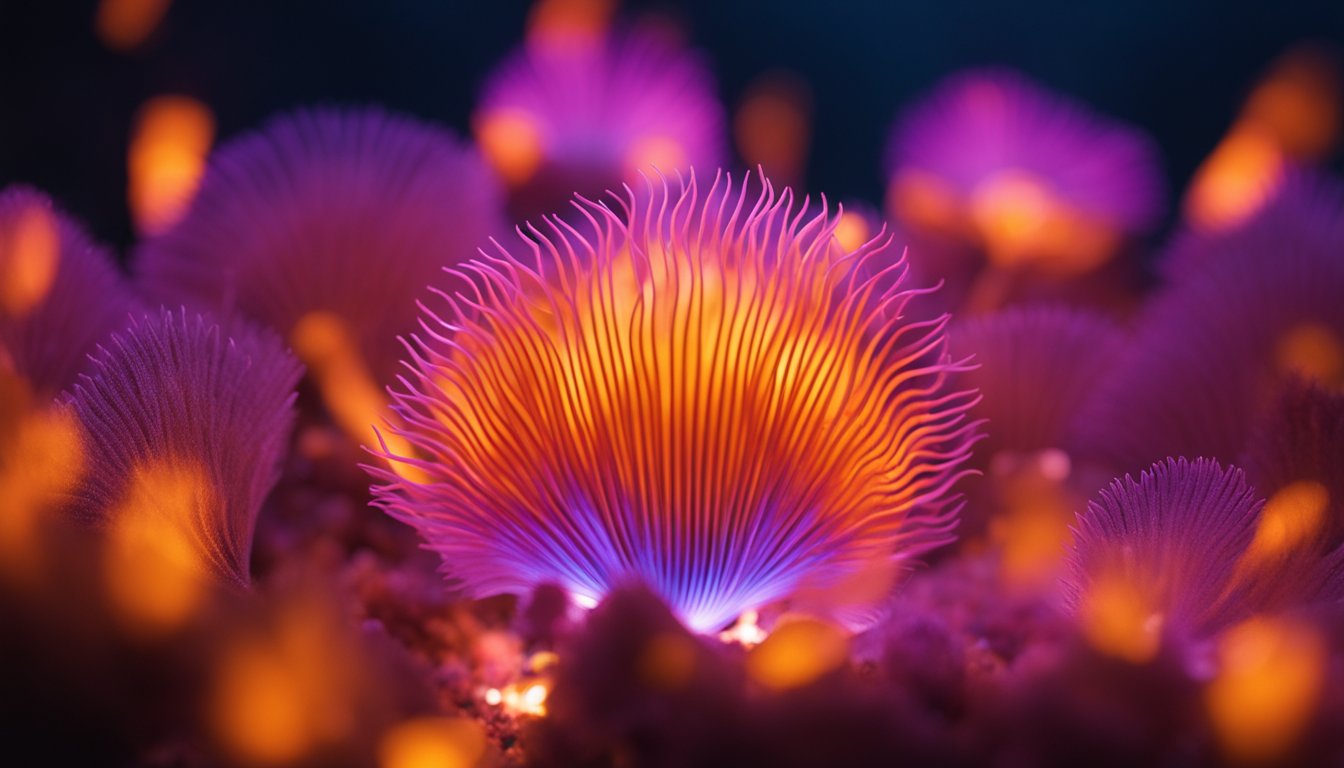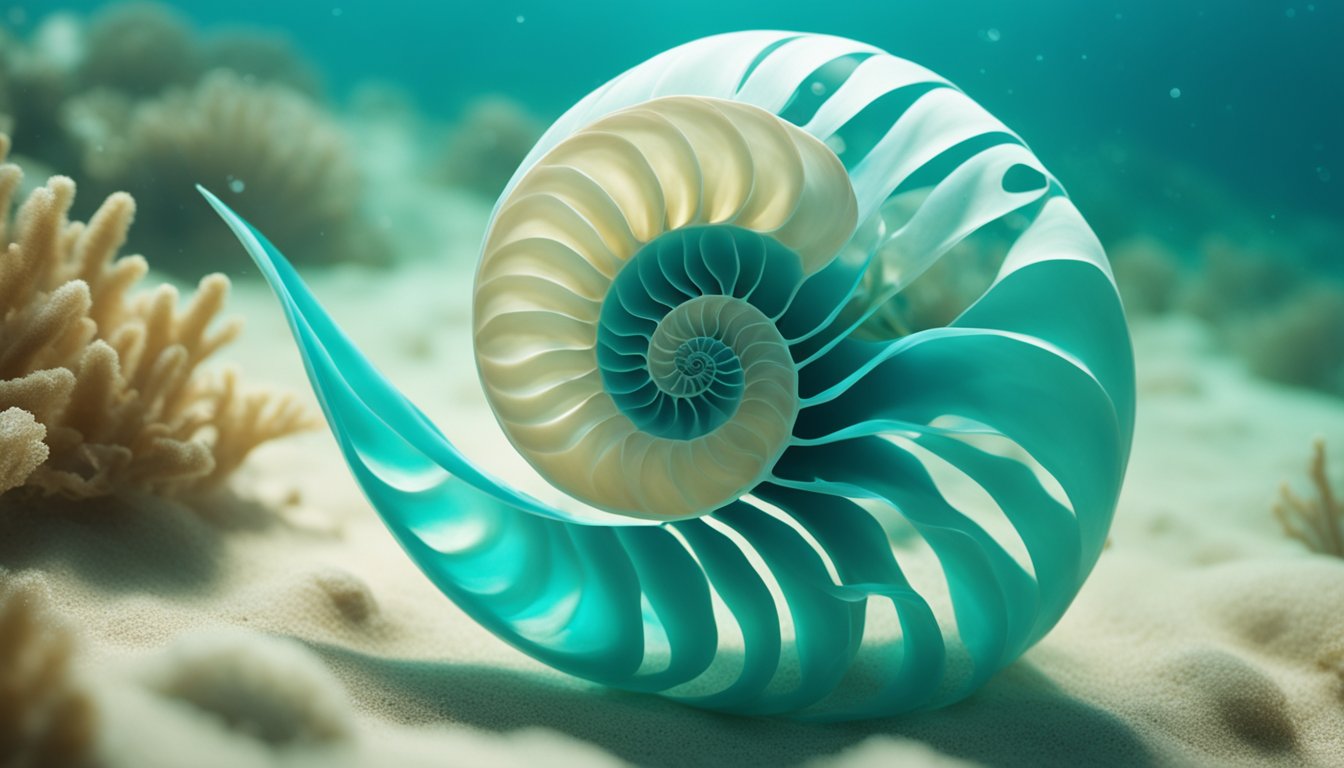When we wander the sandy beaches or swim through the warm, turquoise waters of the Caribbean, we might be lucky enough to spot a true ocean treasure: the queen conch.
This large, spiraled seashell isn’t just a pretty decoration; it’s the home of an extraordinary sea snail that has been part of the ocean’s ecosystem for millions of years.
Its scientific name is Strombus gigas, but we simply know it as the queen conch, a name that reflects its regal and impressive size.

This magnificent shell is more than just eye candy for beachcombers; it plays a crucial role in marine life.
Did you know that the queen conch is actually quite the traveler?
While they may seem to be slow movers with their hefty shells, they are surprisingly spry, gliding across the sea floor on a muscular foot, searching for seagrass to feast on.
Their diet helps keep the seagrass beds healthy, which in turn keeps our oceanic world thriving.
Queen conchs have an amazing life cycle that includes a transformation from tiny, free-swimming larvae to full-grown adults that can weigh up to 5 pounds!
And these aren’t short-term residents of the ocean either; they can live up to 30 years.
Imagine all the stories a single shell could tell if it could talk about the vast ocean it calls home!
On our journey to learn about the queen conch, we’ll discover some cool facts and secrets that make it a shell to behold.
What Is the Queen Conch?

Our journey takes us beneath the waves to discover the Queen Conch, a marine mollusk with a shell that’s both a home and a work of art.
Habitat and Distribution
Our friend the Queen Conch thrives in the warm, shallow waters of the Caribbean Sea, the Gulf of Mexico, and the western Atlantic Ocean.
Bright sunshine filters down through crystal clear waters to greet these creatures in the sea grass beds and sandy bottoms that they call home.
Imagine soft sands and swaying grasses, that’s where our conch neighbors live.
Physical Characteristics
The Queen Conch’s shell is a marvel, sporting a vibrant pink interior that peeks out from a sturdy, spiraled exterior.
Usually, they can grow to be quite the impressive size, with adults reaching up to 12 inches in length. Just think, their shells can be as long as a ruler!
Their bodies inside are tough too, with a muscular foot they use to skid along the ocean floor. Can you picture gliding across the sea bed using just one foot?
That’s the conch’s daily dance!
The Life Cycle of the Queen Conch

In the sparkling waters of the Caribbean, the queen conch embarks on an extraordinary journey from a tiny egg to a full-grown adult.
This marine snail’s life cycle is fascinating, with specific stages that are both unique and complex.
We’ll dive into how these beautiful creatures grow and reproduce, carrying on the cycle of life under the sea.
From Egg to Adult
Queen conches lay clusters of eggs in a gelatinous string that can be several meters long. These egg masses contain thousands of tiny conch embryos.
After about five days, the eggs hatch into veliger larvae, which are microscopic and drift with ocean currents.
For the next three weeks or so, the larvae feed on plankton, growing and changing until they’re ready to settle on the ocean floor.
Once they find a suitable spot, usually seagrass meadows, the veligers metamorphose into juvenile conches, which are known as rollers.
Juvenile conches sport a disproportionately large and elegant shell in comparison to the rest of their body, and they’ll spend approximately three to five years growing and maturing.
During these years, their beautiful pink, orange, and yellow shells will harden and develop that distinctive spiral we all find so captivating.
Mating Behavior
Queen conches reach sexual maturity around three to four years of age.
When it’s time to mate, males extend a long, specialized reproductive organ to transfer sperm packets to the females.
We can often spot a line of conches during the mating season as they engage in this fascinating mating ritual.
Females may mate with several males and store the sperm for later use.
This allows them to produce multiple batches of eggs, making the most of a good breeding season.
Once the eggs are fertilized, the female conch will lay her long, gelatinous strings of eggs on the seafloor, and our journey starts anew.
Just imagine, each queen conch we see in the Caribbean waters has gone through this incredible transformation.
From a drifting veliger to the beautiful shelled creature gliding through the seagrass, each queen conch is a small wonder in the vast ocean.
Isn’t nature amazing?
Human Connections

When we come across the queen conch, we’re not just looking at a marine creature, but a significant symbol that’s been revered across cultures and time.
From its economic importance to its deep cultural roots, let’s explore how this shellfish has intertwined with human lives.
Cultural Significance
Deep in the heart of many Caribbean cultures, we find the queen conch firmly embedded in tradition and heritage.
Its imposing shell has served as a spiritual emblem and a centerpiece in various ceremonies.
Can you imagine hearing a conch shell horn announcing a village gathering? It’s a sound that’s been resonating for centuries.
Imagine holding a piece of history, smooth and patterned, that could’ve sailed the seas as ornamentation or even as currency in trade long before our time.
This isn’t just a conch; it’s a storyteller of our ancestors.
Economic Value
As we seek to unravel the economic web the queen conch is spun into, we find it’s not just a cultural beacon but a livelihood for many coastal communities.
Fishing: There’s a dance between the harvesters and the sea, where the conch is sought after both for its meat and its ornate shell.
Craftsmanship: Each shell can be transformed into remarkable pieces of art and jewelry, a testament to the skill and creativity of local artisans.
Tourism: Picture this: a beach-side stall brimming with radiant conch shells, attracting tourists like a lighthouse beckons ships, contributing significantly to local economies.
We’re all part of a bigger picture, where even the smallest shell plays a mighty role in many lives.
Conservation Efforts

Before we dive into the nitty-gritty, let’s get a quick peek at what we’re up against and what’s being done to protect our shelled friends.
Threats to Survival
The queen conch is in a bit of a pinch.
Overfishing is a big problem; everyone seems to want a piece of this marine beauty, whether it’s for their ornate shells, tasty meat, or the belief in their supposed medicinal properties.
On top of that, their habitats, those warm, shallow waters they love so much, are being damaged by pollution and development.
It’s not easy being a conch these days, especially when it takes so long for them to grow up and join the adult club!
Protection Initiatives
People around the globe are stepping up to shield these fabulous creatures.
Countries with conch neighbors have put laws in place to control how many can be taken from the sea and set seasons for when it’s okay to do so.
Marine protected areas give conchs safe places to live without the worry of fishing nets.
Scientists have their thinking caps on, too, studying the conchs’ lifestyles to figure out the best ways to help them.
We’re also getting the word out for everyone to learn about the conchs, so the next time you’re at the beach or a souvenir shop, you’ll think twice before buying a conch shell.
It’s a team effort to make sure our conchy companions stick around for a long, long time.
Discovering the Queen Conch
We’re about to meet a fascinating sea creature – the queen conch. It’s a large, marine mollusk that’s as striking as it is unique.
Its habitat choices and life in captivity offer us a glimpse into its intriguing world.
In the Wild
Imagine we’re snorkeling in the warm, shallow waters of the Caribbean Sea, and we spot the queen conch in its natural habitat.
We see the conch’s impressive shell, spiraling outward and often covered in algae, which blends perfectly with the sandy ocean floor.
It’s not just their home; these algae work as their camouflage, hiding them from predators like octopuses and stingrays.
Strombus gigas – that’s their scientific name – are talented at digging; they use their strong foot to push sand beneath their shells and vanish from sight.
Did you know these guys love company?
Queen conchs are usually found in groups, which scientists call “aggregations.” These social gatherings might be a way for them to feel safe and maybe even chat in their conchy way.
In Aquariums
Now, let’s teleport to our favorite aquarium. Don’t you just love watching sea creatures glide in their oversized, glassy homes?
Queen conchs can be spotted here, too, gracefully sliding along the bottom with their foot extended.
It’s like they’re wearing a frilly skirt around their shell.
Educational touch tanks or special exhibits allow us to get up close and observe their behavior and anatomy in a safe space.
While these conchs don’t get to roam vast seascapes, they are ambassadors for ocean conservation, teaching us about biodiversity and the significance of protecting marine ecosystems.
It’s a real treat seeing them without getting our feet wet, but we must make sure we only touch gently, if allowed, and follow the aquarium staff’s rules to keep these delicate creatures healthy and happy.
Frequently Asked Questions
In our journey to understand the queen conch, these are some of the curious inquiries that often bubble up. Let us explore these together!
What makes the queen conch different from other conch species?
The queen conch stands out with its large, robust shell that boasts spiny projections and a brilliant pink or orange interior.
Unlike its smaller relatives, it can reach up to a foot in length and lives exclusively in warm Caribbean seas.
We recognize them by their distinctive crown-like spire, making them royalty in the conch world.
Can you tell me how conch shells become bigger over time?
It’s fascinating how queen conch shells grow! As the conch munches away on algae and other goodies, its soft body inside the shell grows.
To accommodate this growth, the conch adds new shell material at the opening, which gradually spirals outwards and enlarges over time—just like how we outgrow our clothes and need new ones!
Why are the queen conch populations decreasing, and are they considered endangered?
Sadly, our dear queen conch is facing trouble. They’ve become a coveted catch for their tasty meat and stunning shells.
Overfishing and poaching have led to a sharp decline in their numbers.
While not globally labeled as endangered, they are protected and listed as a species of concern.
It’s up to us to ensure that they don’t slip towards extinction.
What do queen conch shells symbolize in different cultures?
In the tapestry of different cultures, queen conch shells hold various meanings. They symbolize beauty and fertility in some Caribbean cultures.
Elsewhere, they’ve been used in musical instruments or as a symbol of pilgrimages.
These shells have a way of weaving themselves into the stories and traditions of the people who admire them.
Why is it not allowed to collect queen conch shells in some areas like The Bahamas?
The Bahamian shores often tell us a strict ‘no’ when it comes to taking queen conch shells.
This is to protect these marine creatures from being overharvested.
By leaving the shells where they are, we help maintain a healthy ecosystem and allow conch populations to thrive for future generations to marvel at.
Are there any special laws in the US regarding owning or selling conch shells?
In the US, there are indeed special regulations pertaining to queen conch shells.
It’s important to ensure that any conch shells we’d like to own or sell have been sourced legally, without harming the environment.
These rules are part of our collective effort to safeguard these magnificent creatures of the sea.




